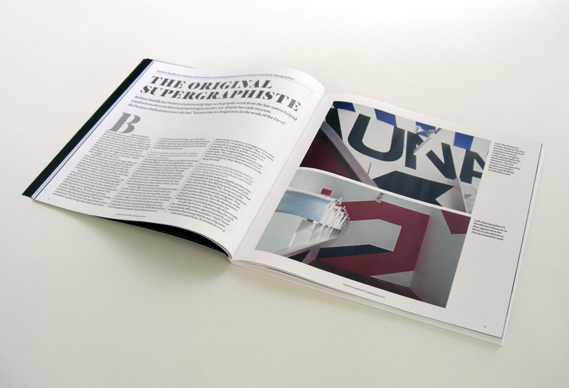The current (February) print issue of Creative Review (which you can buy here) includes a wonderful interview with Stauffacher Solomon by Adrian Shaughnessy. In it, she highlights some of the issues that came to restrict her professional practice. At one point she describes her attempts to balance her working life in 1960s San Francisco with her home life and the limitations that imposed. While her male peers had the luxury of obsessing long into the night over every last detail and type choice, she had other demands on her time:
"Now that I happily live alone with my dog I have time to think, and I realise that I was always so frantically busy making money to live, taking care of my daughters and worrying about men, that I never had time to think, least of all about my work. At my office I just drew up the first design I visualised so that I could leave to pick up Chloe or Nellie from school, shop for dinner, cook and clean, play wife and do all the stuff that working mothers do."
In the 1970s, tiring of battles over receiving credit for her work and admitting to a distaste for the kind of self-promotion others used to advance their careers, she became disillusioned with graphic design and her role in it:
"Clever verbal architects used my skills to promote their projects; mostly real estate developments. I designed good design covers for many questionable commodities. I worked fast and well and my projects came in at or below the budget. I flattered the men, got paid and then went home to cook dinner."
And then in 1977, having closed her office, she went back to college, this time to the University of California, "to study what I hadn’t learned in Basel; the myths and misinterpretations behind the messages of the Modern Movement. I read mostly French philosophers cleverly discrediting the superficial visual covers I was so skilled at designing; the deceits I’d wrought on the world by camouflaging guileful land developments with good design covers and learned that to design is to do the work of the Devil."
And so one of the most talented designers of her generation was lost to the profession, preferring to pursue a career as an artist instead.



No comments:
Post a Comment